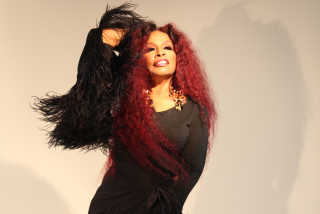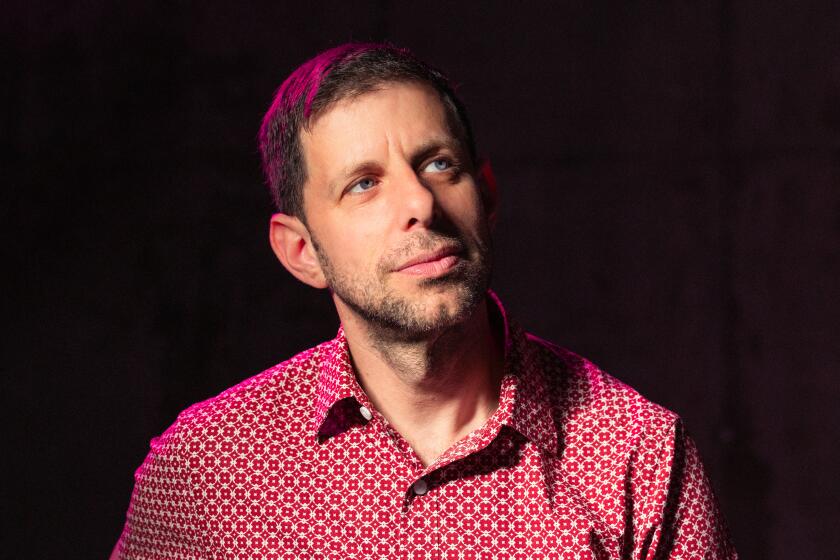An Opus in Progress
At the ripe, respectable age of 20, the Santa Barbara Chamber Orchestra is, by now, a firmly entrenched part of Santa Barbara’s cultural scene, a well-dressed, upright citizen in the crowd. We can expect a finely tooled sound from the group that conductor Heiichiro Ohyama has led, and refined, for many years now.
But it wasn’t always thus. Following the trail back through its history, we find the orchestra striking up in a less likely venue than its current home in the Lobero Theater. In the earliest days, its players stuffed into the Isla Vista meeting place known as Borsodi’s coffeehouse, striking up the sound of Wagner’s “Sigfried Idyll” across the street from the Bank of America, which had been burned down eight years earlier in a student demonstration, earning Isla Vista 15 minutes of national fame.
As founding conductor Jeffrey Evans explained: “I wanted to put the music in that setting so people would see that this was just like listening to a band. And yet there is this different music. Everybody had a great time.”
The tradition continues, in different garb and venue.
It all started courtesy of Evans’ youthful idealism. He steered the orchestra through its first five years before moving to the Seattle area, and he’ll be returning as guest conductor Sunday and Tuesday to celebrate the orchestra’s 20th birthday season, just as he did a decade ago when it turned 10.
Over the past many years, Evans has traded in his baton for a mouse, as the author of the popular music software called “Practica Musica.”
“As it happens,” he said recently, “computer music is my metier, really. It’s what I was made to do. The conducting was an interesting thing and something I enjoy, but it’s not my true mission in life, it turns out.”
Evans remembers his motivation for starting the orchestra in the late ‘70s.
“Many of the people my own age, from the ‘60s generation, let on that they didn’t like classical music. I thought, ‘They can’t possibly be saying they don’t like the Leonore Overture. What they’re really saying is that they’re put off by something in the atmosphere of the music, feeling that this is an elite institution they don’t know anything about and once they go in, they’ll be ridiculed for being ignorant and feel like it isn’t their place.’
“The music, I felt, was really important and would be valuable to people. I wanted to spread it. I thought that if it were presented it in the right way, it would surely impact people, and they’d be happier for it.”
He rallied musicians and audience into the cause, including such notable players as violinists Ron Copes (now a member of the Juilliard String Quartet), Michelle Markarski and Nina Bodnar, along with some eager amateurs.
The mandate was to make the music happen. And crowds showed up, to the extent that the orchestra moved up to the Fleischmann Auditorium, part of the Natural History Museum. There, Evans continued his policy of presenting serious music in an informal way, setting up tables where listeners could eat and drink while listening, and speaking before the performance.
This attitude wasn’t always embraced in the music community. “It was looked down upon at the time, and was considered in poor taste by some people. But it was what I wanted to do for this specific reason.”
Just before Evans’ departure in 1983, the orchestra settled into the Lobero. The SBCO has grown steadily upward and outward, and the ranks of musicians now include many players from Los Angeles.
The SBCO’s 20th-anniversary season includes more concerts, with additional performances on Sunday afternoons. On the list of guest soloists are violinist Cho-Liang Lin, the Golub-Kaplan-Carr Trio, and pianist Andre Michel-Schub.
* Santa Barbara Chamber Orchestra, Sunday at 2:30 p.m. and Tuesday at 8 p.m. at the Lobero Theatre, 33 W. Canon Perdido, Santa Barbara. $30 and $35. (805) 963-0761.
Other News: Meanwhile, Santa Barbara’s symphonic parade kicked up over at the Arlington theater last weekend, as the Santa Barbara Symphony launched into its 46th season in fine, mostly romantic style. Speaking of numbers, this season represents the fifth under the assured guidance of conductor Gisele Ben-Dor, who has done much to nudge the orchestra into a higher artistic plane.
She also knows how to gracefully insert music of our time into the programming. As bold and sometimes properly bombastic as were the readings of Rachmaninoff and Tchaikovsky, the concert’s highlight came early, with Samuel Barber’s Essay for Orchestra, No. 2, Opus 17.
Barber’s short, punchy piece proved to be a wonderful way to kick off a concert, and a season. Gentle harmonic tension hovers over the piece from the outset, as a small thematic kernel grows. Anxious moments and heroic sweep make their way into its gradually unfurling path. It’s modern, without that bitter aftertaste alienates most symphonic audiences.
Elsewhere in the concert, pianist Bella Davidovich returned to the Arlington stage after two years. She showed requisite ease and dynamic refinement on Rachmaninoff’s Rhapsody on a Theme by Paganini for Piano and Orchestra. Tchaikovsky’s Fourth Symphony is an agreeable warhorse, especially when played with the kind of focus and restrained passion Ben-Dor and company brought to it.
More to Read
The biggest entertainment stories
Get our big stories about Hollywood, film, television, music, arts, culture and more right in your inbox as soon as they publish.
You may occasionally receive promotional content from the Los Angeles Times.






